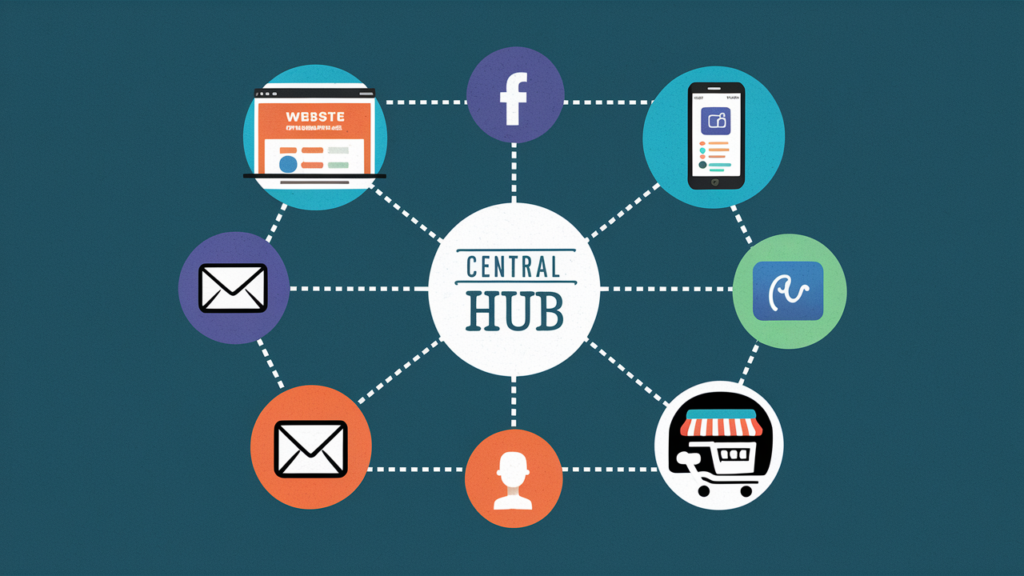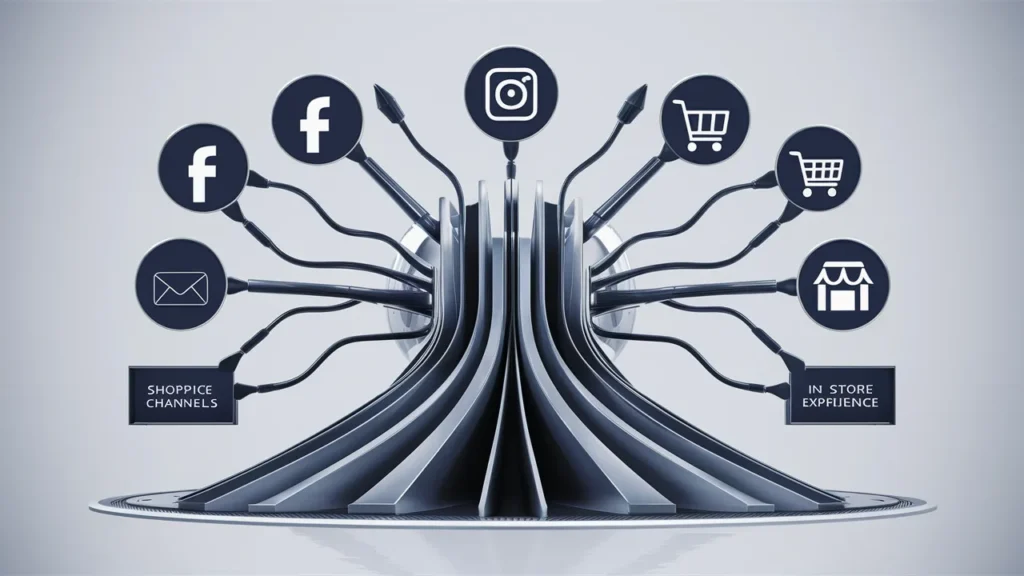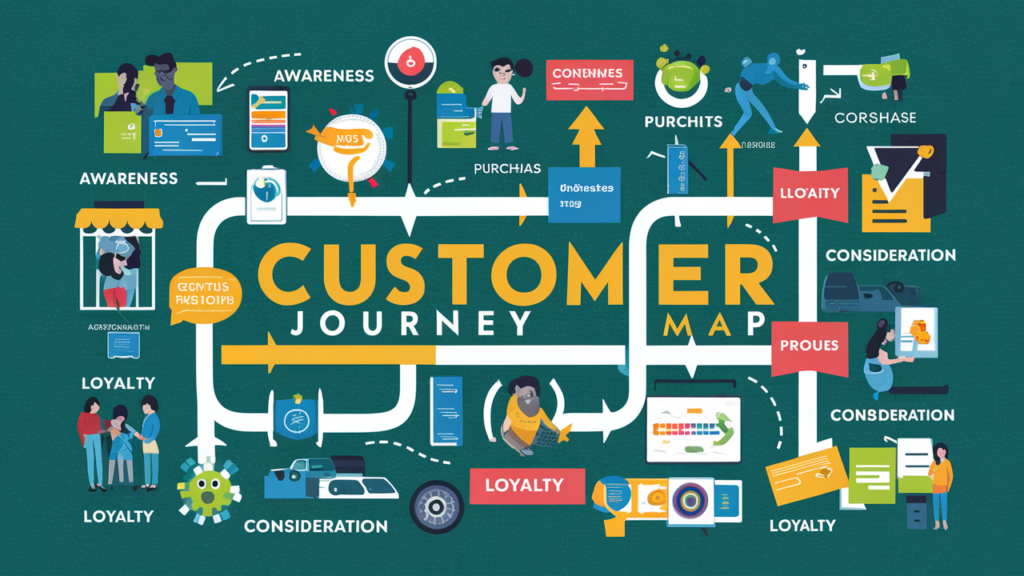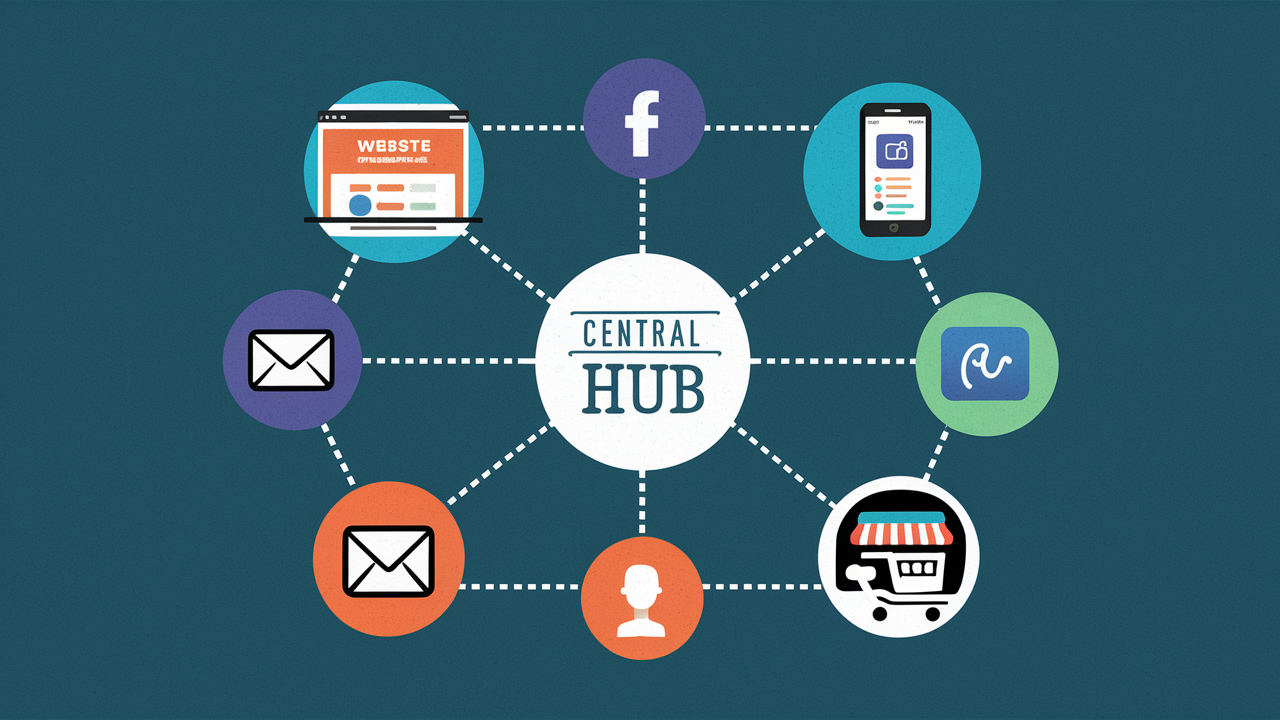Ever wondered how people find out about their favourite brands nowadays? Well, it’s not just by seeing ads on TV or in magazines anymore. Nowadays, it’s all about using smartphones to check out brands on social media like Instagram and Facebook. Some might even watch brand videos on YouTube using their tablets. And let’s not forget about typing a keyword into a search engine on a computer and stumbling upon a brand’s website.

However, no matter how people discover a brand, the key is to give them a consistent and seamless experience across all channels. That’s where omnichannel digital marketing comes in. It’s a term for a strategy that ensures every marketing channel – whether it’s social media, websites, or anything else – works together smoothly to give customers the best experience possible.
When done right, digital marketing services can do wonders for a business. Besides, research shows that using multiple channels in a marketing campaign can lead to a 494% higher order rate compared to sticking to just one channel.
So, whether you’re in the B2C or B2B world, effective omnichannel advertising can make or break your customer relationship. It’s the difference between having loyal, repeat customers and losing them to the competition.
In this blog, we’ll examine some of the most effective strategies and examples of omnichannel digital marketing to help you maximize its potential. But before we do so, let’s first understand why it’s so important and what the purpose behind it is.
Why is Omnichannel Digital Marketing Important?
Omnichannel digital marketing is essential because it helps you connect better with your leads and customers and provides a seamless user experience. When people interact with your brand across different channels, they start to understand and trust it more, which can lead to better outcomes for your business.
A recent survey by Gartner showed that when customers have a positive service experience:
- There’s a 97% chance they’ll spread positive word-of-mouth about your brand.
- They’re 86% more likely to spend more money.
- There’s an 82% chance they’ll stick around as loyal customers.
On the other side, if customers have a bad experience, they’re likely to leave. PwC research found that even if people love a product or company:
- 59% will stop engaging after a few bad experiences.
- 17% will walk away just after one bad experience with the brand.
So, what’s the solution to it all? Well, the solution would be to give them an omnichannel experience. Now, you might be wondering what the real purpose of omnichannel digital marketing, right. Read the next section to know more.
Purpose of Omnichannel Digital Marketing
Omnichannel digital marketing is like having multiple doors to your shop, each leading to the same great experience. It’s about seamlessly integrating all the ways you reach out to customers – whether through your website, social media, emails, or even old-fashioned direct mail. But what’s the purpose behind it? Let’s take a look:

Increased Customer Engagement
One of the main purposes of omnichannel digital marketing is to boost customer engagement. Businesses can enhance interactions, increase retention rates, and expand brand exposure by reaching out to customers through multiple channels. Whether it’s online or offline, the goal is to make every interaction meaningful and valuable for the customer.
Increased Customer Retention and Lifetime Value
Omnichannel digital marketing also aims to improve customer loyalty and lifetime value. Businesses can create stronger brand memories and recall by providing a seamless experience across all channels. This can result in repeat purchases and ensures that customers stay engaged throughout their journey with the brand.
Boosting Brand Awareness
Another goal of omnichannel digital marketing is to increase brand awareness. By maintaining a consistent presence across various platforms, businesses can ensure that consumers are constantly exposed to their products and services. As a result, it encourages consumers to interact with the brand through multiple channels, eventually leading to increased brand loyalty.
Improved Sales and ROI
Ultimately, omnichannel digital marketing aims to drive sales and improve return on investment (ROI). By using multiple touchpoints, businesses can enhance brand recall and increase the likelihood of conversions. This marketing approach ensures that every interaction contributes to the bottom line. Eventually, it leads to improved sales performance and ROI.
What are the Common Challenges in Omnichannel Digital Marketing?
Omnichannel marketing might sound simple, but in reality, it’s a bit like juggling multiple balls at once. There are plenty of hurdles to overcome to ensure everything runs smoothly and the strategy works as intended.

Maintaining Consistency in Branding
One of the main goals of omnichannel marketing is to keep the brand consistent across all channels. However, some businesses struggle with this. Besides, they end up sending mixed messages or using different visuals and tones on different platforms. This can confuse customers and weaken the brand’s identity.
Optimizing for Mobile
In this digital world, mobile devices have become a major part. So, ignoring mobile optimization in your omnichannel strategy is a big no-no. So, your website, emails, and other digital touchpoints need to be mobile-friendly to provide a seamless experience for users on smartphones and tablets. Otherwise, you risk losing potential customers who are browsing on the go.
Data Integration Challenges
Omnichannel digital marketing relies heavily on data to create personalized experiences for customers. However, combining data from various channels and touchpoints can be a headache. But, if your data sources are disjointed, you’ll end up with fragmented customer profiles and miss out on opportunities for personalization. So, investing in strong data integration solutions is important to ensure you have a unified view of customer data.
You must now be wondering how to overcome these challenges, right? For that, you need an effective omnichannel digital strategy.
How to Build an Effective Omnichannel Digital Strategy?
To overcome the challenges discussed above you need an effective omnichannel marketing strategy. So, let’s look into the key steps you can take to build an effective omnichannel marketing strategy that drives results.
Get Your Whole Team on Board
Building a successful omnichannel digital marketing strategy starts with aligning everyone on your team and focusing on the customer. But it’s not just about the marketing department; it’s about breaking down barriers and building collaboration across the entire organization.
With the collaboration of every department, you can prioritize customer experience and establish a consistent brand message. This will ensure that every interaction with your brand leaves a positive impression.
Analyze Your Customer Data
Data plays a major part in any effective omnichannel digital strategy. By using customer data, you can gain valuable insights into their needs, preferences, and behaviours. Start by experiencing your brand from the customer’s perspective and creating detailed customer personas. Then, use analytics platforms to analyze survey data and get actionable insights for changing your omnichannel advertising approach.
Create Customer Journey Maps
Mapping out your customer’s journey allows you to visualize their interactions with your brand and identify areas for improvement. So, start by identifying important touchpoints across all channels, from social media to in-store visits. Then, gather inputs from different departments to create a map of the customer experience. This will help you identify opportunities to enhance your omnichannel digital marketing efforts and create a seamless customer experience.
Target Your Marketing Messages Appropriately
Personalization is key to effective omnichannel marketing. So, firstly, segment your subscribers into smaller lists based on similar traits such as demographics, campaign engagement, and shopping behaviour. This allows you to create an omnichannel content strategy to tailor your marketing messages to specific audience segments, making them more relevant and engaging.
Optimize for Mobile
With the continuous increase in smartphone use, mobile optimization is essential for any marketer. So, design user-friendly mobile apps, create mobile-friendly ads, and personalize your campaigns to cater to mobile users. Also, regularly test and optimize your mobile channels to ensure that your customers get a seamless experience.
Test, Measure, and Test Again
Continuous testing and optimization are crucial for improving your omnichannel marketing strategy. So, it’s important to test various components such as messages, headers, images, and send times to determine what connects best with your audience. By tracking and measuring your data regularly, you can identify the most effective tactics and continuously improve your omnichannel strategy.
By following these key steps and continuously optimizing your approach, you can drive meaningful results and stay ahead in today’s competitive landscape.
Also Read –
Dog Eat Dog World: Strategies for Success in a Competitive Landscape 2025
Exploring Online Summer Jobs for College Students
Exploring 6 Brands That Excel in Omnichannel Digital Marketing
In today’s digital age, brands constantly innovate to create seamless and immersive customer experiences across various channels. So, let’s look into omnichannel marketing examples that have mastered the art of omnichannel digital marketing and are setting the benchmark for others to follow.

OYO Rooms
OYO Rooms, a hospitality unicorn, used an omnichannel marketing platform called MoEngage to enhance their customer experience. By delivering seamless messaging across their app and website, they made it easier for customers to book stays. In fact, by using Push Amplification™, they boosted push notification delivery rates by 44%. It’s like giving customers a personalized tour guide wherever they go.
Target
Target partnered with Pinterest to merge Pinterest’s Lens into their app. This allowed customers to snap a photo of something they liked and find similar items available for purchase at Target. In fact, by making it easy for customers to shop, Target increased its sales by almost 10%. It’s like having a personal shopper right by your side.
Singapore Airlines
Even aviation companies like Singapore Airlines are mastering omnichannel marketing. They’ve partnered with AOE-integrated airports and shopping malls to offer a seamless experience for travellers. From booking flights to shopping at the airport, customers can do it all in one place, online or offline. It’s like having a travel concierge who takes care of everything.
Sephora
Sephora excels in blending the online and in-store experiences by providing consistent brand experiences both online and offline. Customers can track purchases, receive beauty tips, and access tutorials online while enjoying personalized service and free makeovers in-store. In the end, this seamless integration has led to a significant increase in mobile orders for Sephora.
Disney
Disney is synonymous with exceptional customer experiences, and its omnichannel advertising strategy is no exception. From the website to theme parks, Disney offers visitors a cohesive and immersive experience at every touchpoint. The My Disney Experience tool allows guests to plan their entire trip seamlessly. On the other hand, the MagicBand enhances convenience with features like room access, FastPass entry, and photo management.
These omnichannel marketing examples show us that omnichannel digital marketing isn’t just about being everywhere—it’s about providing a seamless, personalized experience for customers no matter where they are.
Conclusion
In a world where customer expectations are constantly evolving, omnichannel digital marketing offers a pathway to success. By creating a seamless experience across all touchpoints, brands can connect with their audience in meaningful ways. Eventually, it can result in driving sales and building long-term relationships. So, if you haven’t already embraced omnichannel digital marketing, now’s the time to do so.









